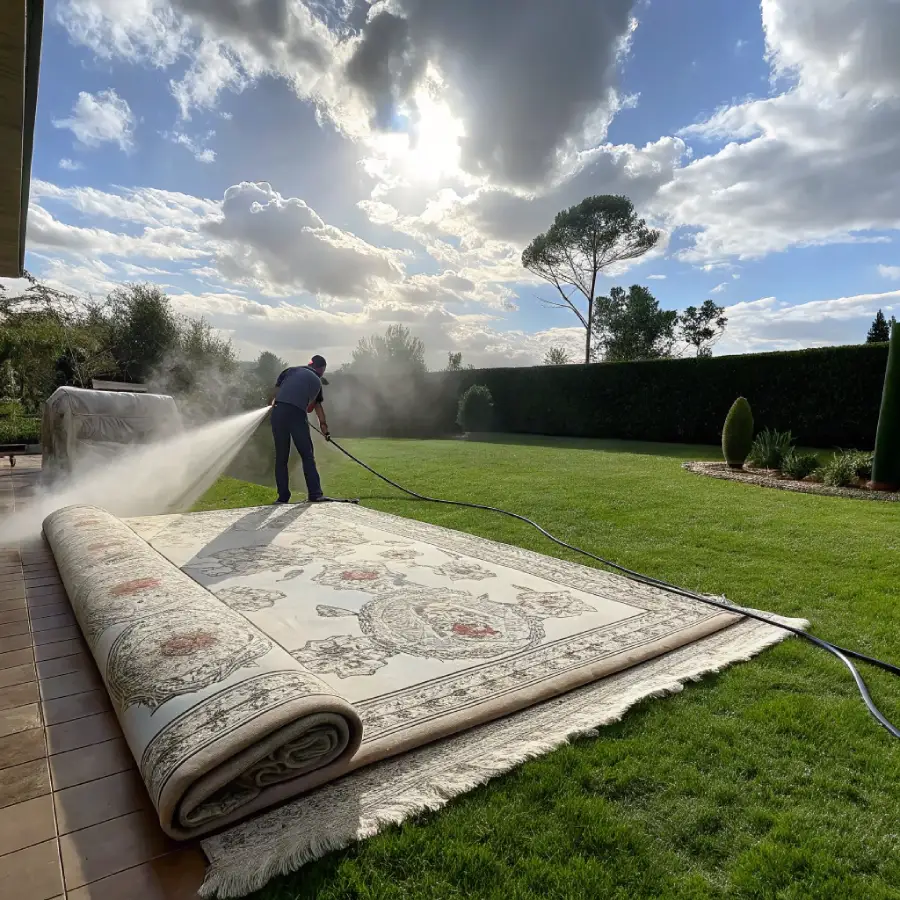Carpet cleaning is essential for maintaining a fresh, clean, and hygienic home, but one question many homeowners ask is, “How long does carpet take to dry after cleaning?” After scheduling a professional cleaning or handling the task yourself, waiting for the carpet to dry can feel like an eternity. You want your space to return to normal without worrying about damp carpet fibers or the risk of mold and odors.
If you’ve ever had this experience, you’re not alone. Understanding how long your carpet will take to dry after cleaning can help you plan better, especially when you’re expecting company, or just want to move furniture back in and resume your daily routine.
In this article, we will dive into the main factors that affect carpet drying time, including the carpet type, cleaning method, environmental conditions, and the thickness of the carpet. We’ll also share actionable tips to help you speed up the drying process and ensure that your carpet dries effectively, so you can enjoy your clean space sooner. Keep reading to learn how to efficiently dry your carpet after cleaning.
Looking for Expert Carpet Cleaning in Toronto? We’ve got you covered!
Our team provides professional cleaning to keep your carpets spotless and fresh.
What Affects Carpet Drying Time?
Several factors influence how long it takes for your carpet to dry after cleaning. From the type of carpet to the cleaning method used and the environment in which the carpet is cleaned, each aspect can significantly alter drying times. Let’s take a look at the most important factors that affect carpet drying times.
1. Carpet Type
The type of carpet you have plays a big role in how long it takes for it to dry. Carpets are made from different materials, and each material absorbs moisture at different rates.
Synthetic Carpets
Carpets made from synthetic fibers, such as nylon, polyester, and olefin, are designed to be moisture-resistant and dry faster. These fibers typically don’t absorb moisture as much as natural fibers do, which allows them to dry quicker. For synthetic carpets, expect drying times to be in the range of 6 to 8 hours under ideal conditions.
Natural Fiber Carpets
Wool and other natural fiber carpets are more absorbent than synthetic carpets. Wool, in particular, can absorb a significant amount of moisture, which means it will take much longer to dry. Natural fiber carpets typically take 12 to 24 hours to fully dry, depending on the cleaning method used and environmental conditions.
High-Pile vs. Low-Pile Carpets
The height and density of your carpet’s pile also impact drying time. High-pile carpets, which have longer fibers, trap more moisture and, therefore, take longer to dry. In contrast, low-pile carpets (which have shorter fibers) allow moisture to escape more easily and typically dry faster. High-pile carpets could take anywhere from 12 to 24 hours to dry, while low-pile carpets often dry within 6 to 8 hours.
2. Cleaning Method
The cleaning method used is one of the primary factors influencing drying time. Some methods require more moisture and therefore result in longer drying times, while others use less water and dry faster.
Hot Water Extraction (Steam Cleaning)
One of the most effective cleaning methods, hot water extraction, also known as steam cleaning, involves spraying hot water combined with a cleaning solution onto the carpet fibers. The water is then extracted using powerful suction. While this method cleans deeply, it leaves the carpet wetter compared to other methods. Steam-cleaned carpets can take anywhere from 6 to 12 hours to dry, depending on the room’s humidity and airflow.
Dry Carpet Cleaning (Bonnet Cleaning)
Dry carpet cleaning involves using a machine with a rotating cleaning pad soaked in a cleaning solution that absorbs dirt and debris from the carpet’s surface. This method uses very little moisture, which makes the drying process faster. Dry cleaned carpets usually take 2 to 4 hours to dry. While this method is quicker, it’s not as effective as steam cleaning when it comes to deep cleaning the carpet.
Carpet Shampooing
Carpet shampooing involves applying a soapy water solution to the carpet and then scrubbing it with a machine. Afterward, the water is extracted from the carpet. This method often leaves carpets wet for a longer period of time. Shampooed carpets typically take 6 to 12 hours to dry, depending on how much moisture is left behind after extraction.
Encapsulation
A newer cleaning method, encapsulation, uses a special cleaning solution that crystallizes dirt into powder, which can then be easily vacuumed away. This method uses less water than steam cleaning, which helps carpets dry more quickly. Encapsulation carpets typically take 1 to 3 hours to dry, making it a great choice for light cleaning and quicker turnaround times.
3. Environmental Conditions
The environment in which your carpet is cleaned plays a huge role in how quickly it will dry. Factors like temperature, humidity, and airflow can either speed up or slow down the drying process.
Humidity
High humidity can significantly increase drying times. When the air is already saturated with moisture, it’s harder for the water in the carpet to evaporate. If you live in a humid climate or are cleaning your carpet during a rainy season, your carpet may take much longer to dry. In areas with high humidity, carpet drying times can stretch to 12 to 24 hours or even longer.
On the other hand, dry climates promote faster evaporation. Low humidity allows the moisture in the carpet to evaporate more quickly, resulting in shorter drying times.
Temperature
Warm air helps to speed up the drying process. If your home is too cool, the drying process will take longer. Ideally, you want the temperature in the room to be between 65°F and 75°F (18°C to 24°C) for optimal carpet drying. If the temperature is too high, it could damage your carpet fibers, so it’s important to avoid extreme heat.
Airflow
Airflow is one of the most important factors for speeding up the drying process. A room with poor airflow will retain moisture, which can slow down the drying time. To help the carpet dry faster, open windows and doors (weather permitting) to allow fresh air to circulate. You can also use fans to boost airflow. In some cases, you may even want to use a dehumidifier to remove excess moisture from the air, further accelerating the drying process.
4. Carpet Thickness and Padding
Carpet thickness and the type of padding used underneath the carpet also affect drying time. Thicker carpets with denser padding absorb more moisture and take longer to dry. If you have a thick, plush carpet with high-density padding, you may need to allow additional time—up to 24 hours or more—for it to dry completely.
On the other hand, thinner carpets or carpets with low-density padding will dry faster. If the padding is too thick or made from absorbent material, it could hold moisture for a longer period of time, which may increase drying time.
5. How Much Water Was Used?
The amount of water used during the cleaning process also impacts drying time. Carpet cleaning services that use more water to ensure a deeper clean will generally require longer drying times. Carpet cleaning methods that use less water (such as dry cleaning or encapsulation) will typically result in faster drying times.
Average Drying Times for Carpet Cleaning Methods
Based on the cleaning method, the material of the carpet, and other factors, here’s an overview of typical drying times:
| Cleaning Method | Average Drying Time |
| Hot Water Extraction (Steam Cleaning) | 6 to 12 hours |
| Dry Carpet Cleaning (Bonnet Cleaning) | 2 to 4 hours |
| Carpet Shampooing | 6 to 12 hours |
| Encapsulation | 1 to 3 hours |
Example of Drying Times Based on Carpet Type
- Synthetic Carpet (e.g., Nylon): 6 to 8 hours (with adequate ventilation)
- Wool Carpet: 12 to 24 hours (depending on humidity levels and ventilation)
- High-Pile Carpet: 12 to 24 hours (requires longer drying due to dense fibers)
- Low-Pile Carpet: 6 to 8 hours (dries faster due to less moisture retention)
Tips to Speed Up Carpet Drying Time
While it may take some time for your carpet to dry fully, there are several things you can do to speed up the drying process.
1. Increase Airflow with Fans
One of the best ways to promote faster drying is by improving airflow in the room. Place box fans or oscillating fans around the room to circulate air across the carpet. If possible, direct the fans toward the wettest areas of the carpet to improve drying efficiency.
2. Open Windows and Doors
If the weather is dry and not too humid, opening windows and doors will allow fresh air to circulate and help the moisture evaporate more quickly. A cross breeze can create a more natural flow of air, which will speed up the drying process.
3. Use a Dehumidifier
In areas with high humidity, using a dehumidifier can help remove excess moisture from the air, allowing the carpet to dry faster. If you’re using a dehumidifier, keep it running in the room where the carpet was cleaned to assist with moisture removal.
4. Adjust Room Temperature
Raising the room temperature slightly can help the carpet dry more quickly. Use your home’s central heating or a space heater to warm up the room. Be careful not to overheat the room, as this could damage your carpet fibers.
5. Avoid Walking on Wet Carpet
Walking on wet carpet not only slows down the drying process but also leaves footprints or marks on the carpet. It’s best to avoid walking on the carpet until it’s completely dry. This will also help prevent dirt from being tracked onto the wet surface.
How to Tell When Your Carpet Is Dry
It’s important not to assume your carpet is fully dry just because it looks dry on the surface. Here are some ways to check:
- Feel the carpet: Touch different areas of the carpet. If any area feels cool or damp, the carpet is not fully dry.
- Check the padding: Press down on various areas of the carpet to feel if the padding underneath is still wet.
- Smell the carpet: A damp or musty odor can indicate that the carpet is still wet or hasn’t fully dried.
Conclusion
Carpet drying time can vary based on several factors, including the carpet type, cleaning method, environmental conditions, and the amount of moisture left behind after cleaning. On average, you can expect your carpet to take anywhere from 6 to 12 hours to dry, with thicker or natural fiber carpets taking longer.
By using fans, opening windows, raising the room temperature, and using a dehumidifier, you can speed up the drying process and get back to your routine faster.
Taking care of your carpet after cleaning is important to ensure it lasts for years to come. Be patient, allow the proper drying time, and follow the tips shared here to ensure your carpet dries safely and effectively.
FAQs
1. How can I speed up drying after steam cleaning my carpet?
Use fans, open windows, increase airflow, and set the room temperature to a warm but comfortable setting to speed up drying after steam cleaning.
2. Why does my carpet take so long to dry after cleaning?
Thicker carpets, high humidity, and cleaning methods that leave excess moisture behind can all contribute to longer drying times.
3. Can I walk on the carpet immediately after cleaning?
It’s best to avoid walking on wet carpets until they’re fully dry to prevent re-soiling and damage to the carpet fibers.
4. How can I tell if my carpet is completely dry?
Feel the carpet’s surface for dampness, smell for any musty odors, and press down to check if the padding is still wet.


